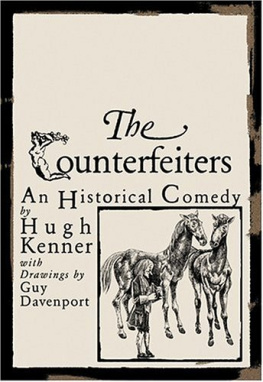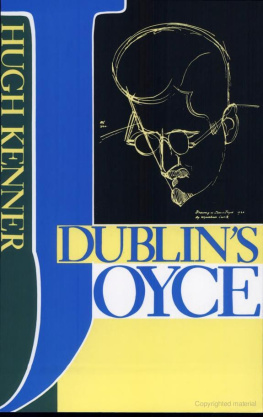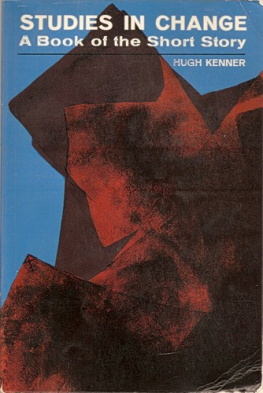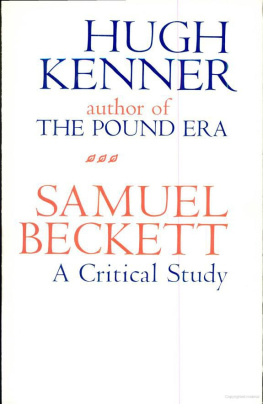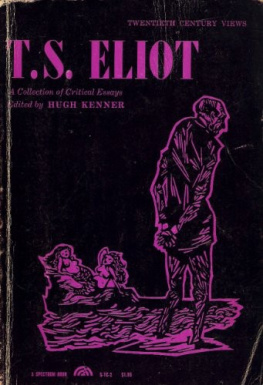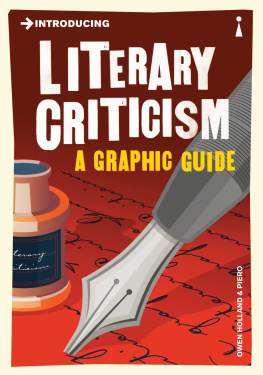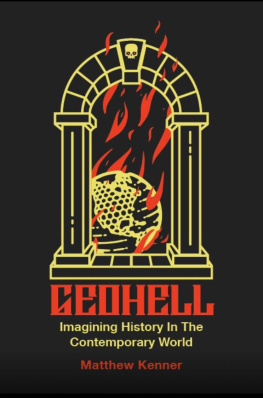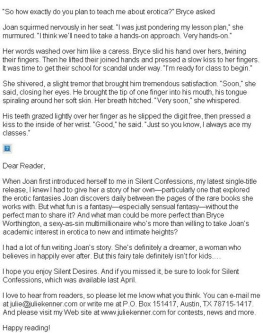Hugh Kenner - The Counterfeiters: An Historical Comedy
Here you can read online Hugh Kenner - The Counterfeiters: An Historical Comedy full text of the book (entire story) in english for free. Download pdf and epub, get meaning, cover and reviews about this ebook. year: 2005, publisher: Dalkey Archive Press, genre: Art. Description of the work, (preface) as well as reviews are available. Best literature library LitArk.com created for fans of good reading and offers a wide selection of genres:
Romance novel
Science fiction
Adventure
Detective
Science
History
Home and family
Prose
Art
Politics
Computer
Non-fiction
Religion
Business
Children
Humor
Choose a favorite category and find really read worthwhile books. Enjoy immersion in the world of imagination, feel the emotions of the characters or learn something new for yourself, make an fascinating discovery.
- Book:The Counterfeiters: An Historical Comedy
- Author:
- Publisher:Dalkey Archive Press
- Genre:
- Year:2005
- Rating:5 / 5
- Favourites:Add to favourites
- Your mark:
The Counterfeiters: An Historical Comedy: summary, description and annotation
We offer to read an annotation, description, summary or preface (depends on what the author of the book "The Counterfeiters: An Historical Comedy" wrote himself). If you haven't found the necessary information about the book — write in the comments, we will try to find it.
This is one of the best short books of literary criticism that I know.Journal of Aesthetics and Art Criticism
Wide-ranging enough to encompass Buster Keaton, Charles Babbage, horses, and a man riding a bicycle while wearing a gas mask, The Counterfeiters is one of Hugh Kenners greatest achievements. In this fascinating work of literary and cultural criticism, Kenner seeks the causes and outcomes of mans ability to simulate himself (a computer that can calculate quicker than we can) and his world (a mechanical duck that acts the same as a living one).This intertangling of art and science, of man and machine, of machine and art is at the heart of this book. He argues that the belief in art as a uniquely human expression is complicated and questioned by the prevalence of simulationsor counterfeitsin our culture. Kenner, with his characteristically accessible style and wit, brings together history, literature, science, and art to locate the personal in what is an increasingly counterfeit world.
Hugh Kenner: author's other books
Who wrote The Counterfeiters: An Historical Comedy? Find out the surname, the name of the author of the book and a list of all author's works by series.

